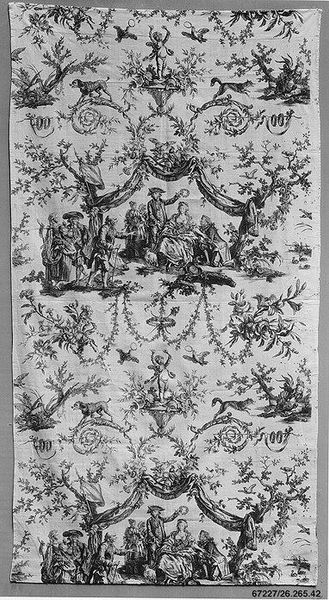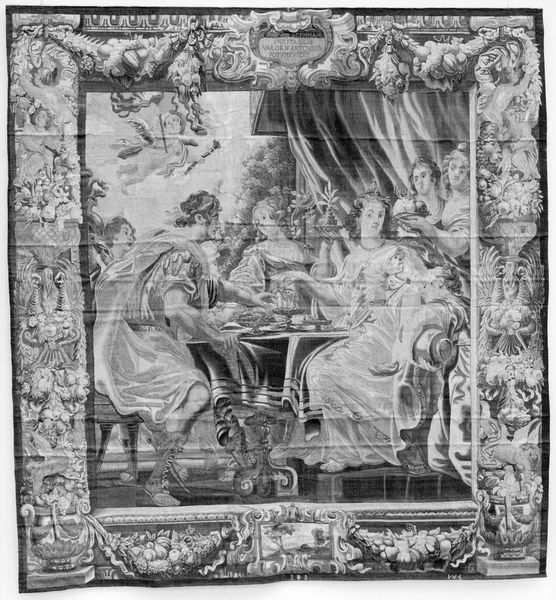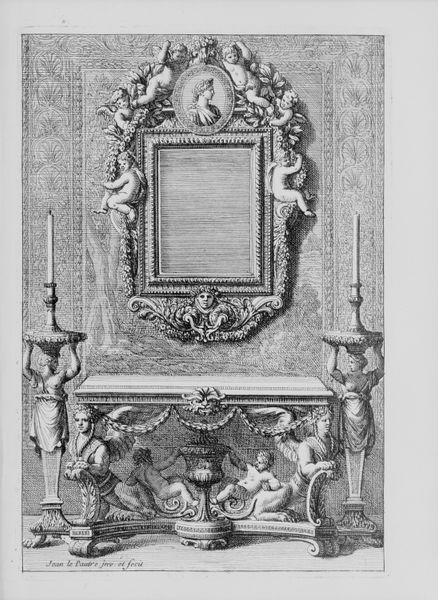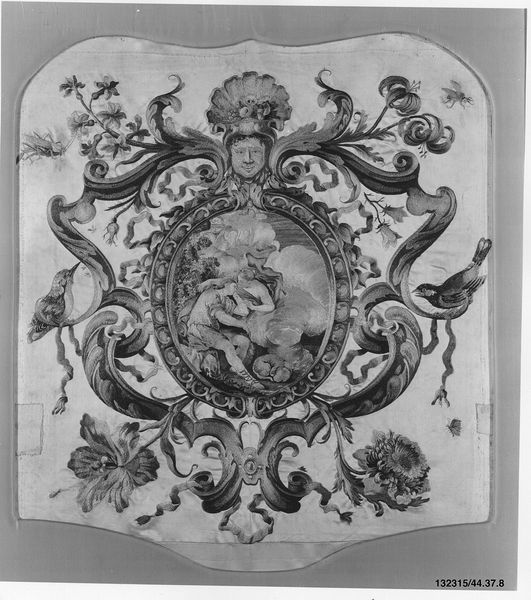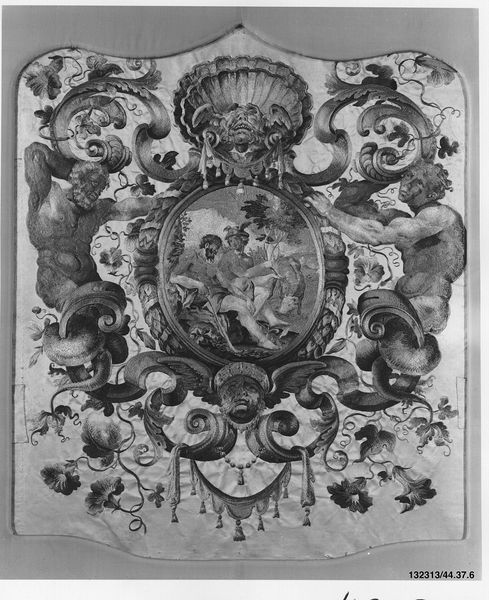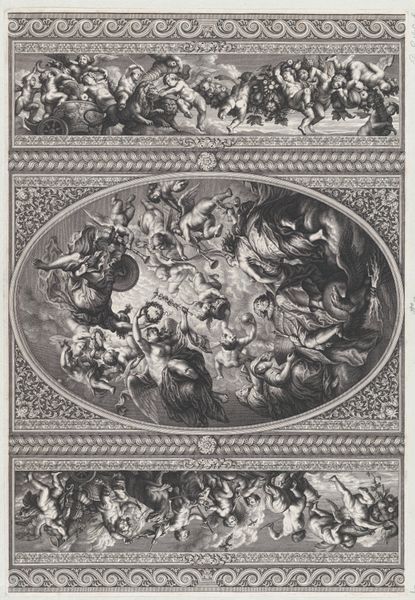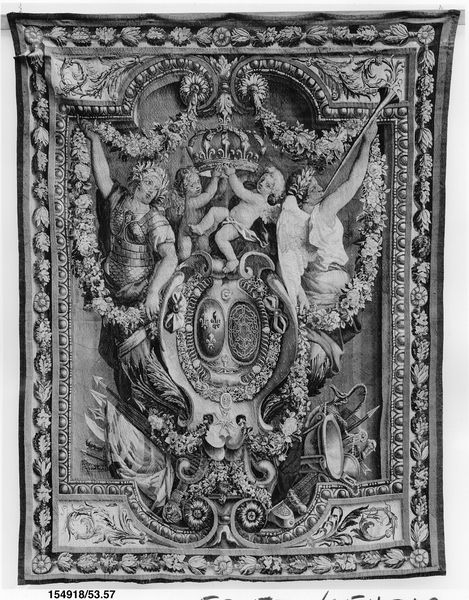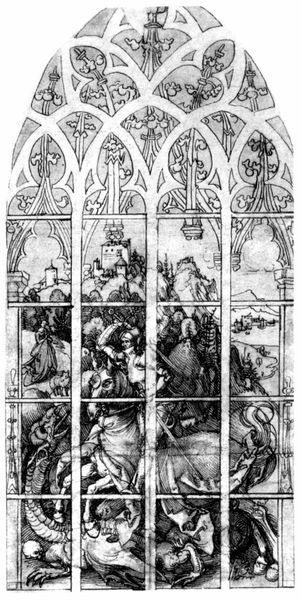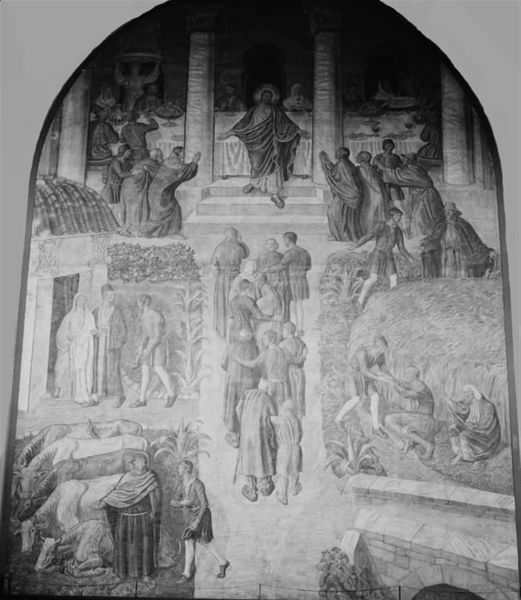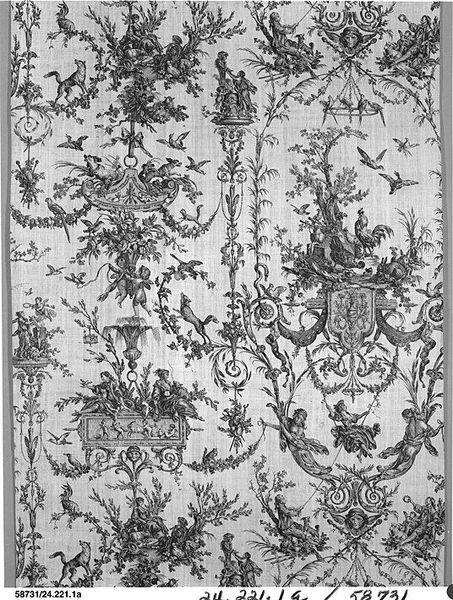
print, textile
# print
#
landscape
#
classical-realism
#
textile
#
figuration
#
history-painting
#
decorative-art
#
imprinted textile
Dimensions: H. 60 1/4 x W. 52 inches 153.0 x 132.1 cm
Copyright: Public Domain
Curator: This Quilt, dating from 1810 to 1820 and attributed to Favre, Petitpierre et Cie, immediately strikes me. There’s a restrained elegance in its grayscale, yet something grand in the overall effect. Editor: It’s stunning, like a whole world rendered onto a single piece of fabric. My first impression is that it feels rather formal and staged—there’s an undeniable classical sensibility at work here. What exactly are we looking at? Curator: Indeed. What we see is a remarkable example of decorative art incorporating historical painting and figuration. These imprinted textiles, found here in the collection of the Metropolitan Museum of Art, serve both practical and aesthetic purposes, demonstrating how intertwined art and everyday life were. Editor: You know, as I look closer, it’s hard not to consider the process itself. It is such detailed work; I can imagine the labor involved in crafting such an intricate design. This reminds me of how much the material culture shapes the final product. The way the textile absorbs the ink gives it a unique texture. Curator: Precisely! The composition speaks volumes too. Those oval medallions depict scenes from mythology and history, each telling a story within the larger narrative of classical virtue and ideal beauty. It reveals a desire to impart stories through crafted objects that transcend the boundary of ‘use’ versus ‘art.’ I also wonder who made the artistic decisions in terms of the layout; for instance, why these scenes and not others? Editor: I wonder, too, how decisions regarding accessibility for labor were negotiated. Also, to think about that original bolt of fabric – now a single, museum piece – speaks to consumption habits of a long-lost, early-industrial consumer. The textile serves not just as decoration, but as an encapsulation of social narratives and economic relations. Curator: Absolutely, it reminds us to continually question the structures around the consumption, labor, and cultural narratives. It's truly enriching to explore a work like this with such intertwined historical and cultural contexts in mind. Editor: Indeed. Looking at the print design, understanding both the stories depicted and its journey as a commodity shifts one's entire view of the past. There is more at play than just decoration; there is communication of a different kind happening through this labor of art and manufacture.
Comments
No comments
Be the first to comment and join the conversation on the ultimate creative platform.
